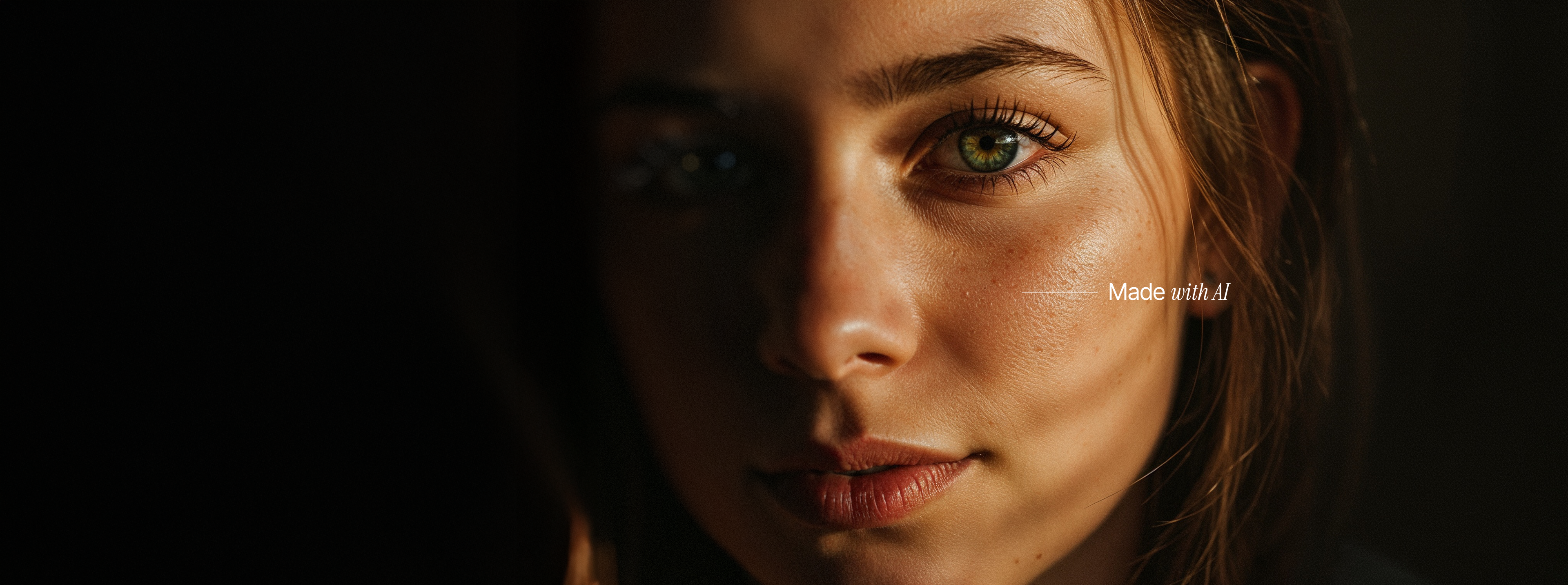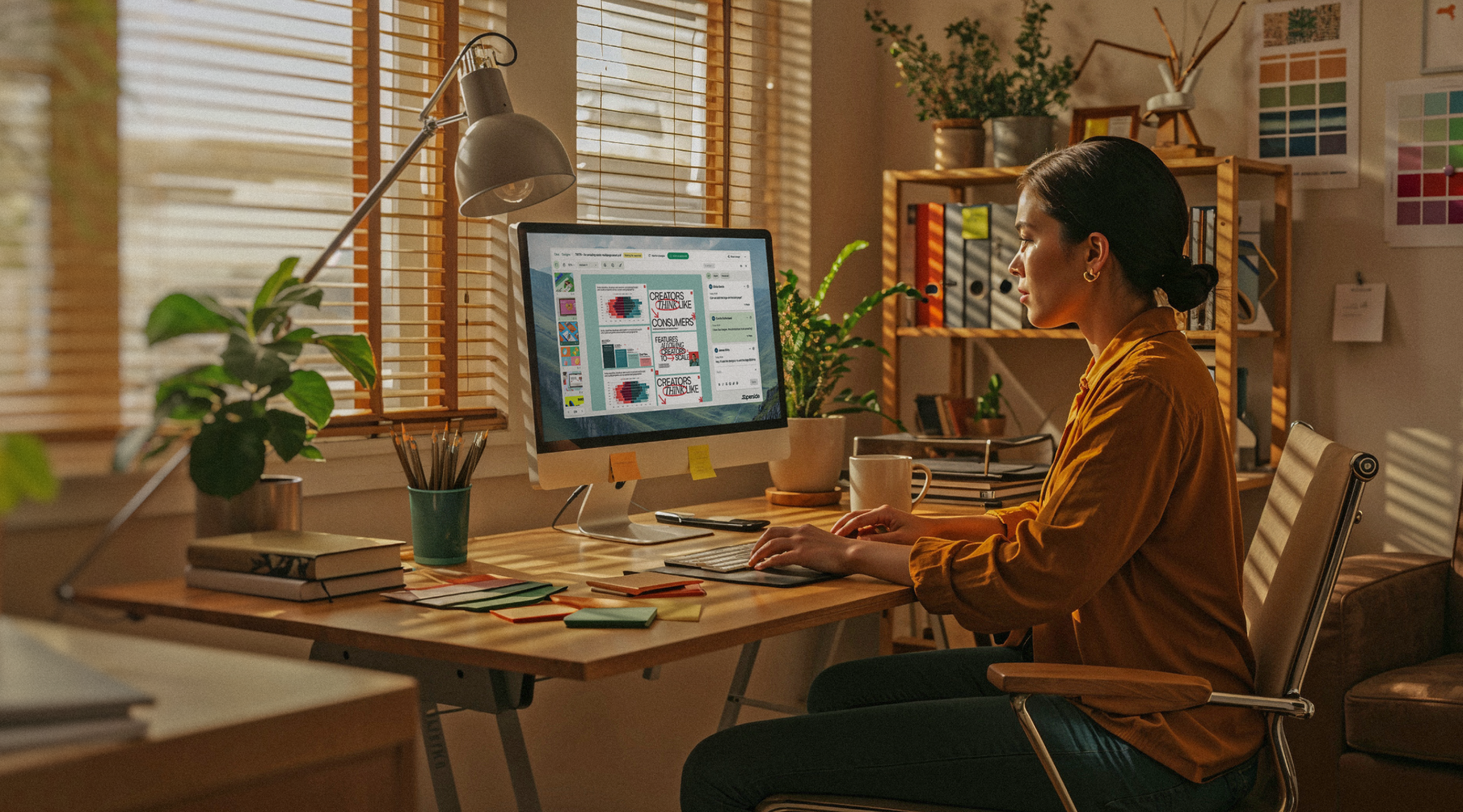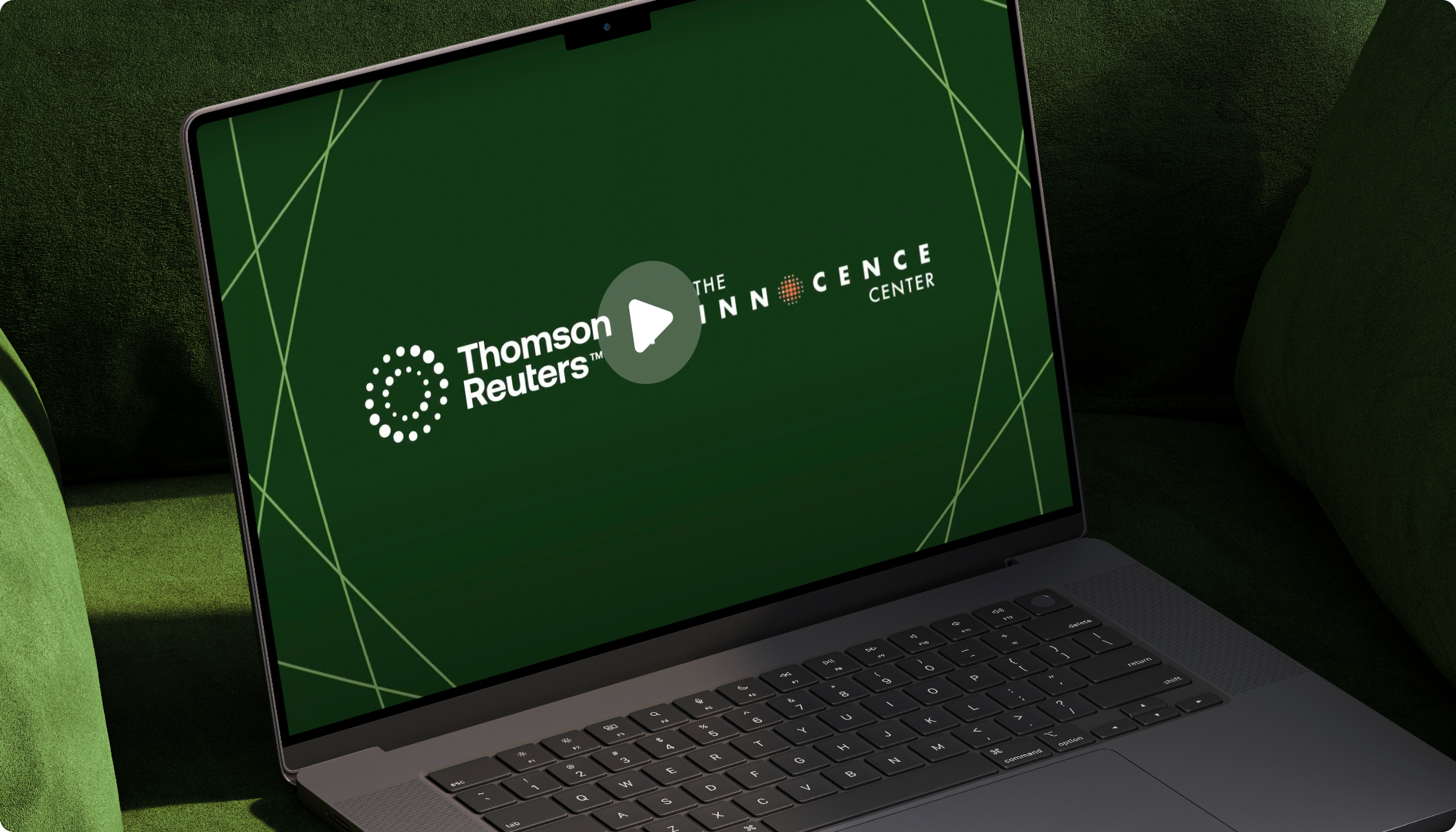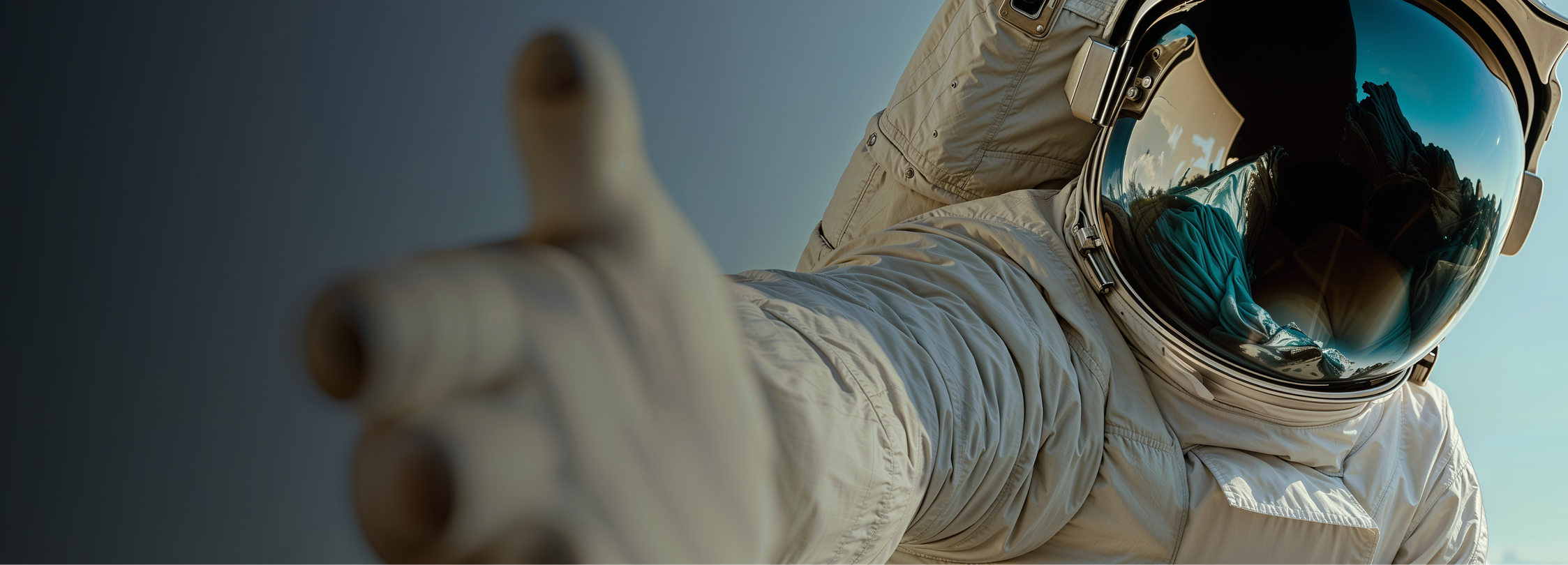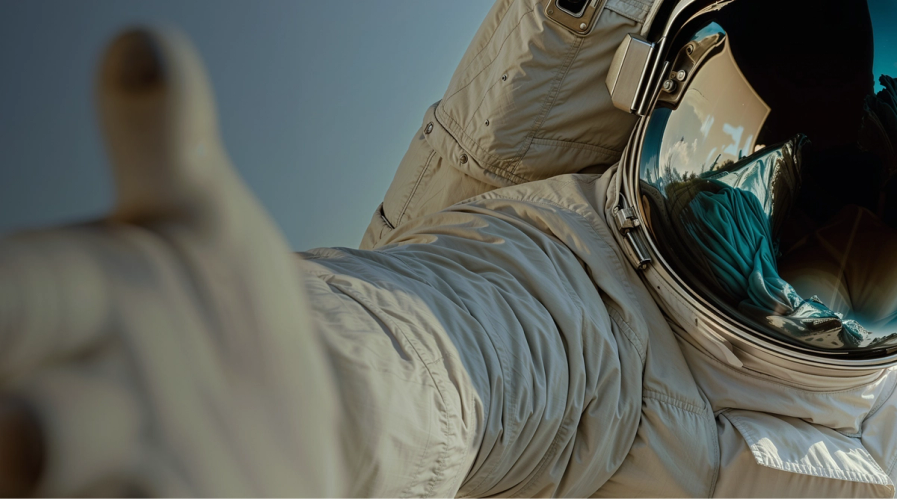Focus, not FOMO: How Revolut built an uncopyable brand
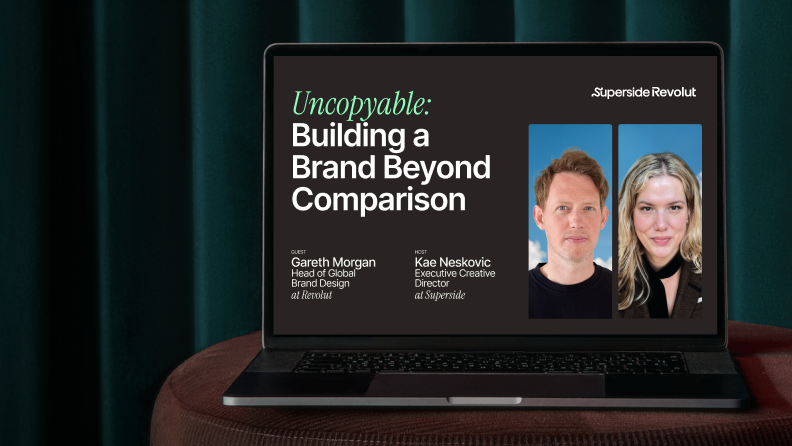
Many brands obsess over competitors, but Revolut proves real wins come from looking inward. By carving out a “third space” between loud challengers and safe incumbents, Revolut built a brand no one can copy—see how and steal their mindset, not their position.
When you’re battling for attention in a crowded market, knowing what your competitors are doing is part of the job for any creative leader. Whether you're rebranding or planning a campaign, you look at your competition to see where there’s a gap your brand can fill.
But what if we’ve got that all wrong?
Instead of looking to competitors to determine a position, what if we looked inwards first and let our brand's unique value guide the way? What if we just ignored competitors and carved out a space of our own?
That’s the advice Gareth Morgan, Head of Global Brand Design at Revolut, shared in Superside's webinar, Uncopyable: Building a Brand Beyond Comparison.
Morgan believes brands should stop chasing competitors and benchmark against their own vision and product. For Revolut, that meant carving out a “third space” that isn’t the loud challenger or the safe incumbent, then maturing every touchpoint to signal innovation, trust and global scale.
Ready to put the blinders on for a change and see what happens? Dig in for ten strategies that Morgan and Revolut used to build an uncopyable brand.
1. Carve out a unique space in the market
Revolut finished an internal rebrand in 2023. When Morgan joined in January 2024, his first big test was an above-the-line push—airport ads across Europe. Seeing the first install in Rome, he realized the brand still wasn’t quite there.
The financial services category felt split between loud challengers and sober incumbents. At nearly 10 years old, Revolut was neither. So, Morgan pitched a “third space” and a more mature identity—one that felt innovative, future-facing, trusted and global, not just disruptive.
When we talk about this third space, this finding your own niche in the market, it's about looking around and knowing your brand and what you stand for, and going for it really.

Key takeaway: Rather than fitting into legacy or challenger categories, carve out a unique position that reflects your evolution and vision.
2. Benchmark against your brand, not the market
Morgan’s view is simple: Stop watching rivals and set standards against the brand you’re building. At Revolut, this meant defining four lenses—innovative, future-facing, trusted and global—and using them as a measure of progress.
You shouldn't really be distracted by what's going on around you. It's like the 100-meter sprint. You never see those sprinters looking around at what anyone else is doing.

Morgan's team matured their photography and 3D assets to match these standards, then used performance tests to fine-tune execution. The benchmark wasn’t “Are we louder than X?” but “Does this feel unmistakably us?”
Key takeaway: The strongest brands measure progress by internal values and objectives, not by what competitors are doing.
3. Let AI do the heavy lifting—strategically
AI can accelerate creative workflows, but it shouldn’t bulldoze strategy. Morgan’s team used AI end-to-end on a test campaign and learned a key lesson: Creative can be generated in days, while copy and strategy still need time to develop.
We had creative in two weeks, and our leadership said, ‘Amazing, let’s go’. Then we had to rush the copywriting and the strategy. What I learned was we needed to stagger it a bit and use AI in a way that it gives different departments a chance to help shape it.

Treat AI as your accelerator, not your creative director. Use it to get to first visuals and variations fast, then hand back to humans for narrative and brand checks. Stagger the work, set clear guardrails. That’s how you ship faster without losing the plot.
Key takeaway: AI can speed up asset creation, but creative strategy, messaging and brand integrity still need a human touch.
4. Refresh your visual language as the brand matures
Revolut realized its “noisy challenger” look no longer fit a 10-year-old global product, so the team raised the bar on craft and tone.
I think we just realized again, it's a bit of a crowded market now and it was time to grow up.

Photography shifted from youthful, hipster-adjacent scenes to more considered portraits. Illustration moved from cute, toy-like 3D to photorealistic renders. Even small tweaks like moving from shouty uppercase to calmer lowercase helped signal maturity without losing edge.
Key takeaway: What worked at launch may no longer serve a scaled audience. Elevating photography, 3D and type can shift perception instantly.
5. Your brand is your culture
At Revolut, the brand mirrors how the company works: Fast-paced, ambitious and always shipping something new. That energy shows up in constant campaign refreshes and bold product bets. The result is a system that feels in motion because the culture is.
Morgan says friends and family see this reflected in the brand, even if they’re not quite sure what’s happening.
Friends keep saying that Revolut seems like a place where we’re constantly doing new things. Someone told me they never see the same ad twice.

Key takeaway: Whether it’s fast, curious, playful or bold, your internal DNA should be visible in every touchpoint.
6. Let performance marketing validate creative decisions
Use testing to de-risk taste.
Revolut’s brand team sets the variables (type, imagery, tone), then growth runs controlled A/B tests—lowercase vs. uppercase, bold vs. regular, old vs. new visuals—to see what actually moves people. The feedback loop helps refine execution without second-guessing the strategy.
The growth and marketing teams run most of the creative tests, but we still learn from them because brand sets all the variables.

Key takeaway: A/B testing layouts, tone and hierarchy yields critical data that can help you refine design choices without guesswork.
7. Treat product and brand as one connected system
Customers don’t separate the app from the ad.
Revolut’s brand team sits between growth and product, supporting both. Morgan says the product team will ship a prototype first, then brand shapes the look, feel and distinctiveness so the experience and the brand expression land as one.
I wouldn't want us to design something and then tell them to implement it in product. It feels a bit backwards.

Key takeaway: Customers don’t distinguish between UX and branding—so neither should your internal teams.
8. Align leadership using brand comparators
Don’t argue abstractly, show it. Morgan builds “comparator” boards with aspirational, out-of-category references to make “premium, mature, global” tangible for designers and execs alike. It’s faster than debating adjectives and gets immediate buy-in.
There's references in there like Aesop and Mercedes, and they're not competitors at all, but what they stand for is what I think is worth tapping into and aligning with.

Key takeaway: Don’t just describe your vision—show it. Use aspirational reference brands to get buy-in quickly.
9. Automate brand governance wherever possible
Revolut relies on in-house tooling and shared libraries to keep thousands of assets in sync. No “brand police” patrols required. During their 2024 rebrand, Morgan recalls the team changing a single file in the library and watching every email template update on its own.
We use a platform that I believe was built at Revolut… it’s super automated and makes a lot of people’s lives a lot easier.

Key takeaway: Leverage centralized tools and asset libraries to ensure consistency and reduce manual brand policing across teams.
10. Earn your place in business strategy with proof
Brand’s seat at the table is won by outcomes.
As Revolut’s work shifted from purely feature-led to more emotive, leadership engagement increased because the brand moved people and the numbers. Morgan’s advice is to show the delta between “what you asked for” and “what it could be,” then deliver.
People are seeing the reward from having a brand that's more emotive or connects better with the audiences. It just moves people in a different way.

Key takeaway: When brand work drives emotional connection and outcomes, it earns a seat at the table, just like product, growth and ops.
Build an uncopyable brand
Uncopyable brands aren’t the loudest or flashiest. They’re the ones that are genuinely different because they're rooted in internal values and vision.
Morgan and Revolut show how to build this type of brand: Carve out your own space instead of conforming to a category, measure success against internal ambition, let AI speed craft while humans guard meaning, automate governance to scale consistently, and make every asset echo the culture that built it.
When you combine relentless originality with tight systems, competitors may be able to mimic your style—but never your feel.
Alex is a freelance writer and newsletter aficionado based in Waterloo, Ontario. When he’s not writing for clients, he’s putting together TL;WR, a weekly culture and events newsletter his mom says is excellent. Alex has worked with some of Canada’s largest tech companies in PR, marketing and communication roles. Connect with him on LinkedIn to chat or get ideas on what to do this weekend in Waterloo.
You may also like these

9 best event branding services for enterprises in 2025
Imagine you walk into an event and don’t know whose it is. The stage is generic. The signage is forgettable. Inside the swag bag: A sad pen and a notebook as blank outside as in.Now picture an experience where every element of the event design feels like you’ve stepped inside the brand’s world. It starts even before you arrive with an invite that lands more like a VIP pass than a calendar placeholder.By the time you walk through the massive entrance arch, you’re already immersed. Motion graphics pulse brand messages across screens. AR wayfinding guides you to your seat. Even the lanyard feels intentional. Now that’s event branding.Top enterprises no longer just run conferences. They stage brand-defining experiences where design, narrative and event coordination work in sync to create magic. As a result, the demand for high-quality event marketing services has never been greater.In this article, we unpack why branded experiences are on the rise and how the right event branding service can be the lifeline your enterprise needs.
Top 5 creative branding strategies & examples for corporations
Remember when you finally bought those ridiculously overpriced sheets because you’d seen the brand’s ads everywhere—on your feed, in your inbox and even in your dreams? That’s not just a coincidence: it’s strategic.But standing out as a brand is no longer easy. To truly be memorable, your brand must be present everywhere, remaining fresh, relevant and unmistakably recognizable.Creative branding can be your compass in the chaos of a world that overflows with content and ads. This comprehensive piece is packed with effective branding tips, real-life inspiration to improve your chances of success and insights into Superside’s design services—a lifesaver for many of the world’s top brands.What are creative branding strategies and why do they matter?The most successful creative branding ideas keep target customers emotionally invested. Unlike regular branding, creative branding involves thinking outside the box by merging marketing strategy, bold ideas and perfectly timed execution to create a consistent, memorable brand image.
5 brand consistency examples for top enterprises in 2025
enterprises scale, brand consistency often becomes a significant challenge.This is problematic, as businesses that lack a consistent, recognizable brand identity often get lost in the marketing noise.However, maintaining a consistent brand image can be demanding for enterprises juggling multiple teams across various regions. On-brand messaging and design can easily be overlooked in the push to gain market share.Fortunately, Superside can help. What follows is a practical guide that provides tips to unify your brand identity—advice built on our extensive experience running brand identity projects for a large portfolio of enterprise customers.Why consistent branding matters to succeed

